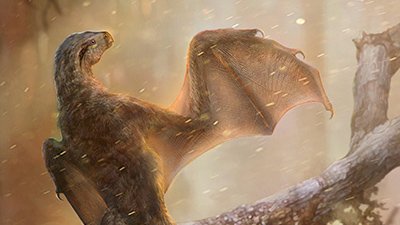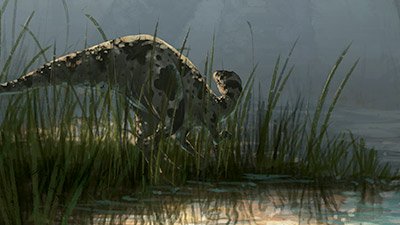Meet Leviathan
Was the skull of an ancient Leviathan found in Dorset?
News Source
Fossil hunter Kevan Sheehan originally spotted the skull sticking out of a cliff face exposed by a rockslide. It took him four years of hard work to finally uncover well enough for extraction.
“What is fantastic about this new skull, not only is it absolutely enormous, but it is pretty much in 3-D and not much distorted.”
The eight-foot-long (2.4 m) skull belonged to a pliosaur, an aquatic reptile reminiscent of the dinosaurs but with four fins, powerful necks, and sharp teeth. And if the creature’s body is proportional to the size of its skull, it will be one of the largest pliosaur fossils ever found—perhaps some 54 feet (16 m) long, having originally weighed between 7 and 13 tons. Paleontologists hope to examine the cliff further to see if the rest of the fossil is buried inside, but that project could take decades, warns Dorset earth science manager Richard Edmonds.
Of particular importance was the good preservation of the fossil. “Pliosaur skulls are very big, but not that robust, in general, and you tend to find them crushed flat—completely pancaked,” explained plesiosaur expert Richard Forrest. (Plesiosaurs were similar to pliosaurs.) “What is fantastic about this new skull, not only is it absolutely enormous, but it is pretty much in 3-D and not much distorted.”
University of Portsmouth paleontologist David Martill described what fearsome predators pliosaurs may have been: “They had massive big muscles on their necks, and you would have imagined that they would bite into the animal and get a good grip, and then with these massive neck muscles they probably would have thrashed the animals around and torn chunks off. It would have been a bit of a blood bath.”
Isaiah 27:1 refers to the “the reptile that is in the sea,” the “fleeing” and “twisted” serpent called Leviathan. Job 41 also describes Leviathan, as God refers to its “outer armor” of “strong scales” and says, “Around his teeth there is terror,” and, “In his neck lodges strength.” Does that sound anything like a pliosaur?
While it isn’t possible to know whether Leviathan was a pliosaur, plesiosaur, mosasaur, or some other marine reptile, the Old Testament passages that discuss it seem to clearly refer to a creature that is not on earth today (as far as we know)—and that hails from the time of dinosaurs, just thousands of years ago in the biblical timeline. Like other accounts of dragons and sea monsters, the Bible’s mentions of Leviathan remind us that humans were alive to see such beasts, many of which were fossilized in the Flood of Noah’s day. Fossil hunter Kevan Sheehan has found one more evidence of that.
Further Reading
For More Information: Get Answers
Remember, if you see a news story that might merit some attention, let us know about it! (Note: if the story originates from the Associated Press, FOX News, MSNBC, the New York Times, or another major national media outlet, we will most likely have already heard about it.) And thanks to all of our readers who have submitted great news tips to us. If you didn’t catch all the latest News to Know, why not take a look to see what you’ve missed?
(Please note that links will take you directly to the source. Answers in Genesis is not responsible for content on the websites to which we refer. For more information, please see our Privacy Policy.)

Answers in Genesis is an apologetics ministry, dedicated to helping Christians defend their faith and proclaim the good news of Jesus Christ.
- Customer Service 800.778.3390
- Available Monday–Friday | 9 AM–5 PM ET
- © 2025 Answers in Genesis




